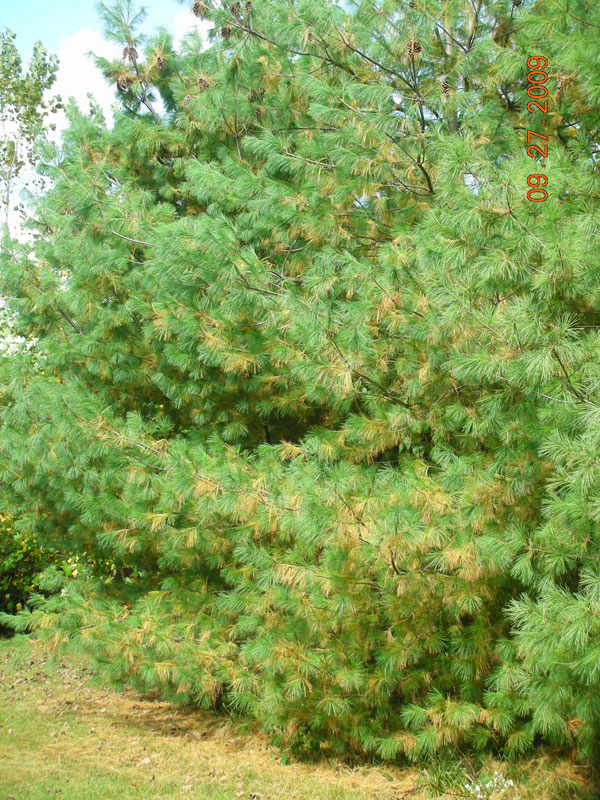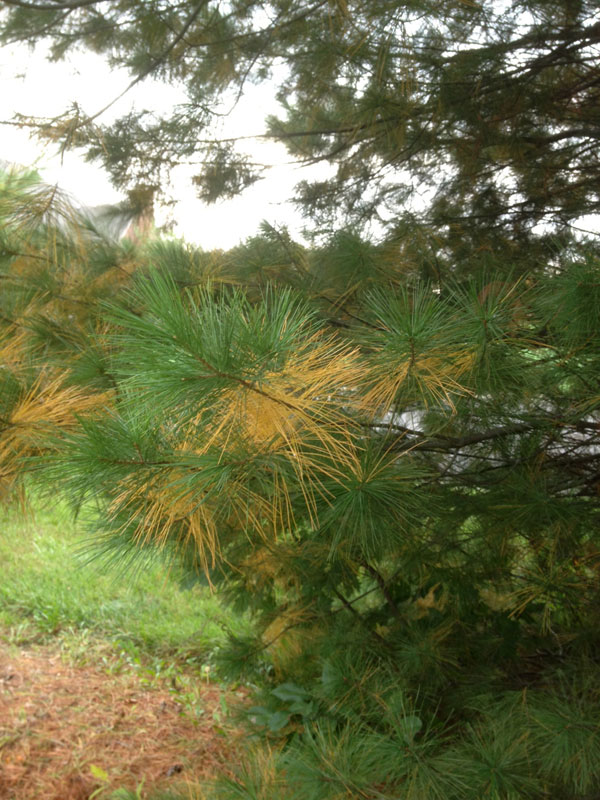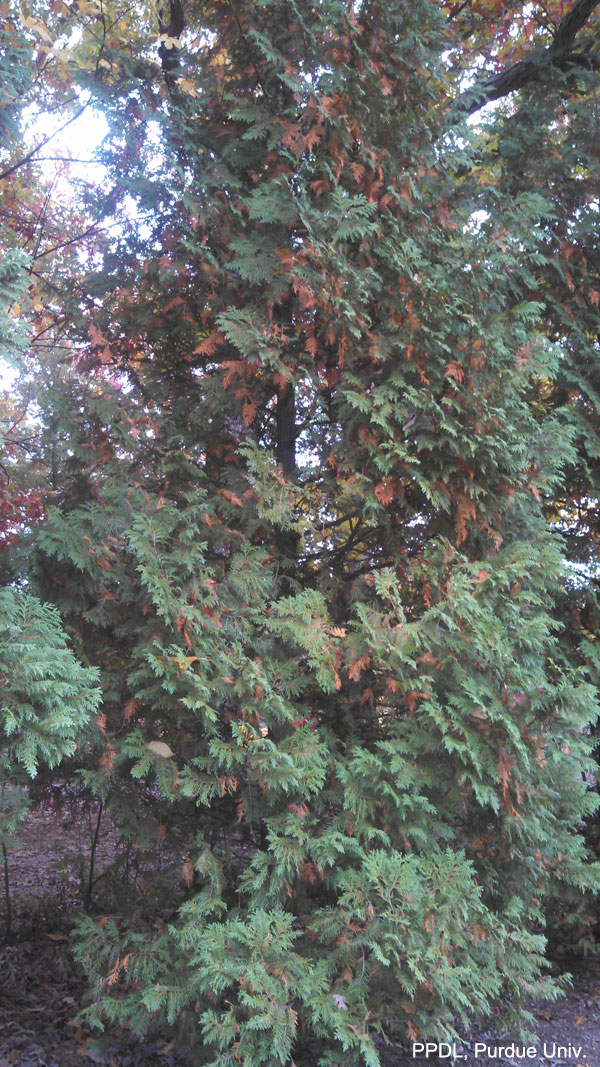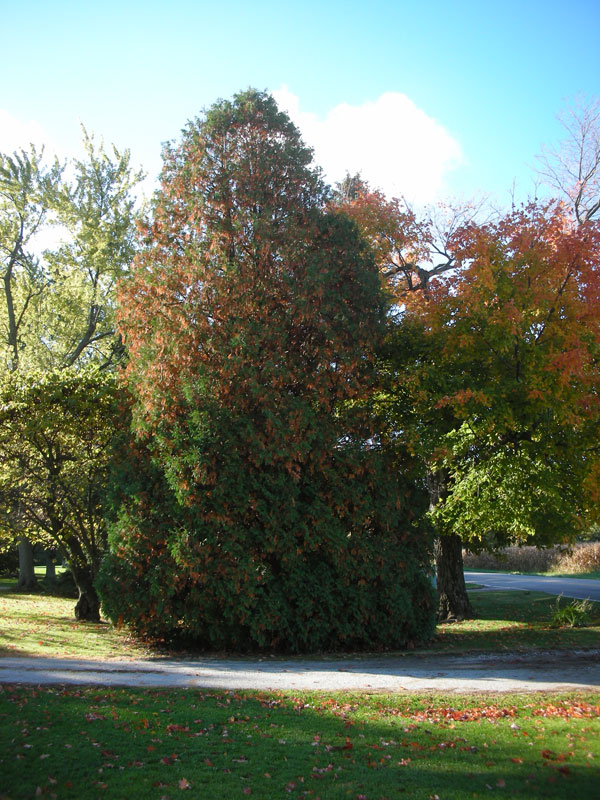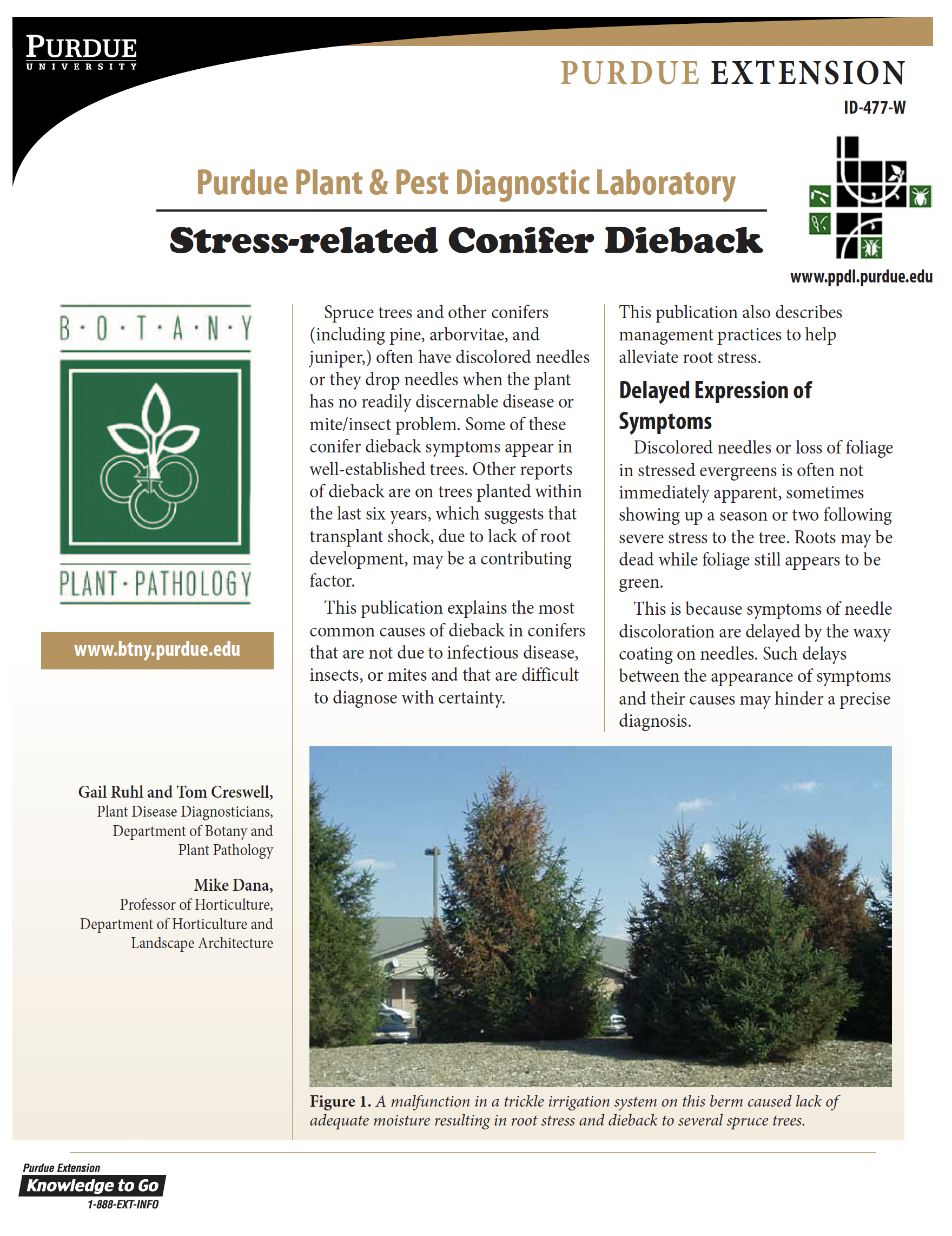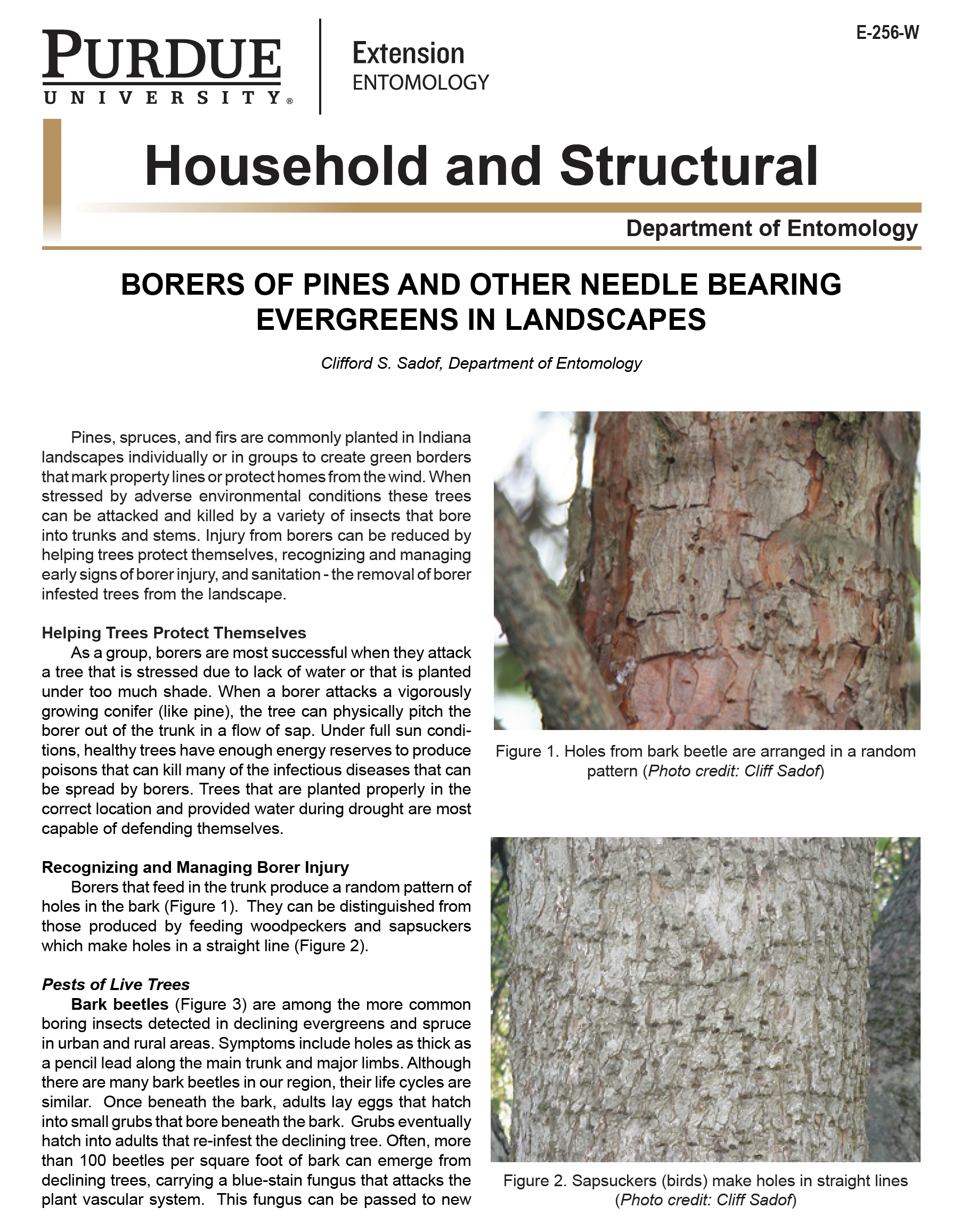Picture of the Week
November 7, 2022
Normal Needle Drop: Even Healthy Evergreens are NOT Evergreen
Gail Ruhl, Sr. Plant Disease Diagnostician and Rosie Lerner, Consumer Horticulture Extension Specialist, both retired
High stress years with extremes in moisture and temperature are very hard on trees, especially evergreens, and can lead to decline and tree death. However, much of what attracts attention every year at this time is the NORMAL discoloration and drop of inner needles on conifers.
Evergreen needles have varying life spans, depending on the species. White pine needles live for 2 years while other pines have needles that persist 2-6 years, depending on species. Spruce needles live 3-10 years. Some species of evergreens have a more noticeable leaf drop than others, shedding many needles all at once, while others shed a little at a time such that it is hardly noticed. White pine and arborvitae have very dramatic annual shed which can be quite alarming if you don't realize that it's perfectly normal.
How can you tell the difference?
If at this time of year when needles of white pine turn yellow on the inside of the tree (inner needles of arborvitae turn brown) and the needles farthest out on the branches remain green, the tree is most likely exhibiting natural needle drop. Natural needle drop is a normal process and does not harm the health of the tree. Moisture stress may increase needle drop but this, in itself, does not harm the tree.
However, in some cases, you may see all the needles on a branch turn color. Excessive moisture followed by extended drought periods this year as well as moisture extremes in previous years may have stressed some trees to the point that they may lose branches or die because of accumulated stress (ID-477-W).
Click image to enlarge
How can you tell if the branch will survive?
First check to see if the branch with the browning needles is alive. Scrape off a small area of the "bark" of the branch with a sharp knife. There should be green tissue immediately under the bark. This green cambium layer is quite thin with the underlying woody tissue being white. If there is no green at all, the branch is dead.
Also check the ends of branches. Dry, brittle twigs indicate that at least that part of the tree is dead. Dead branches should be removed. Major branch removal may destroy the aesthetics of the tree making tree removal the only viable option. Dead trees should be removed promptly to avoid attracting borers (E-256-W).

